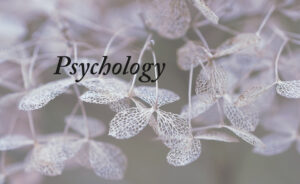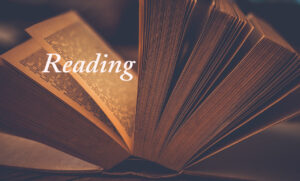The traditionalists view all his work with skeptism because he has spoken of Christ and Buddha as Avatars and does not support the stance that varna determined by birth except in case of rare exceptions. Even his symbolic representation of the Veda and his views differing from Sayana and Yaska are not taken well.
On the one hand I’m happy to see many people take interest in sanatana dharma, but I don’t like this narrow mindedness. It’s doesn’t sit well with me that people discredit Sri Aurobindo.
People now want to go as far back as possible and only trust strictly traditional views. Anyone who disagrees with the written word not just with the scriptures but the ‘authoritative’ interpertations are said to be following their own cult and not Dharma.
I feel their interest and enthusiasm are sincere, but regressive tendencies are coming up.I feel their interest and enthusiasm are sincere, but regressive tendencies are coming up.It is this feeling that Dharma is static. I spoke about this with a friend who told me that this hyper traditionalism is a revolt against atheist/agnostic modernism and people must go through this phase before they can recognise greater things.
The reasons for this resistance are several. The rigidly narrow traditional mindset is only one of them. There is also a genuine inability to comprehend the vastness of Sri Aurobindo’s thought that scans and integrates the earth and heaven and all else in between. Basically there is also a laziness, an inability to think deeper and take up complex problems of existence, thought phobia as Sri Aurobindo called it. Then the stamp of old sanskara of Sannyāsa and Moksha as the highest ideal is another big difficulty. Here is a letter of Sri Aurobindo to his brother Barin recounting some of these.
‘This was the defect of the old yoga—the mind and the Spirit it knew, and it was satisfied with the experience of the Spirit in the mind. But the mind can grasp only the divided and partial; it cannot wholly seize the infinite and indivisible. The mind’s means to reach the infinite are Sannyasa [Renunciation], Moksha [Liberation] and Nirvana, and it has no others. One man or another may indeed attain this featureless Moksha, but what is the gain? The Brahman, the Self, God are ever present. What God wants in man is to embody Himself here in the individual and in the community, to realize God in life.
The old way of yoga failed to bring about the harmony or unity of Spirit and life: it instead dismissed the world as Maya [Illusion] or a transient Play. The result has been loss of life-power and the degeneration of India. As was said in the Gita, “These peoples would perish if I did not do works”—these peoples of India have truly gone down to ruin. A few sannyasins and bairagis [renunciants] to be saintly and perfect and liberated, a few bhaktas [lovers of God] to dance in a mad ecstasy of love and sweet emotion and Ananda [Bliss], and a whole race to become lifeless, void of intelligence, sunk in deep tamas [inertia]—is this the effect of true spirituality?…….
Let me tell you in brief one or two things about what I have long seen. My idea is that the chief cause of the weakness of India is not subjection nor poverty, nor the lack of spirituality or dharma [ethics] but the decline of thought-power, the growth of ignorance in the motherland of Knowledge. Everywhere I see inability or unwillingness to think—thought-incapacity or thought-phobia. Whatever may have been in the middle ages, this state of things is now the sign of a terrible degeneration. The middle age was the night, the time of the victory of ignorance. The modern world is the age of the victory of Knowledge. Whoever thinks most, seeks most, labors most, can fathom and learn the truth of the world, and gets so much more Shakti. If you look at Europe, you will see two things: a vast sea of thought and the play of a huge and fast-moving and yet disciplined force. The whole Shakti of Europe is in that. And in the strength of that Shakti it has been swallowing up the world, like the tapaswins [ascetics] of our ancient times, by whose power even the gods of the world were terrified, held in suspense and subjection. People say Europe is running into the jaws of destruction. I do not think so. All these revolutions and upsettings are the preconditions of a new creation.
Then look at India. Except for some solitary giants, everywhere there is your “simple man,” that is, the average man who does not want to think and cannot think, who has not the least Shakti but only a temporary excitement. In India, you want the simple thought, the easy “word.” In Europe they want the deep thought, the deep “word”; there even an ordinary laborer or artisan thinks, wants to know, is not satisfied with surface things but wants to go behind. But there is still this difference: there is a fatal limitation in the strength and thought of Europe. When it comes into the spiritual field, its thought-power can no longer move ahead. There Europe sees everything as riddle—nebulous metaphysics, yogic hallucination. They rub their eyes as in smoke and can see nothing clear. Still, some effort is being made in Europe to surmount even this limitation. We already have the spiritual sense—we owe it to our forefathers—and whoever has that sense has at his disposal such Knowledge and Shakti as with one breath might blow away all the huge power of Europe like a blade of grass. But to get that Shakti one must be a worshiper of Shakti. We are not worshipers of Shakti. We are worshipers of the easy way. But Shakti is not to be had by the easy way. Our forefathers dived into a sea of vast thought and gained a vast Knowledge and established a mighty civilization. As they went on in their way, fatigue and weariness came upon them. The force of thought diminished and with it also the strong current of Shakti. Our civilization has become an achalayatana [prison], our religion a bigotry of externals, our spirituality a faint glimmer of light or a momentary wave of religious intoxication. And so long as this sort of thing continues, any permanent resurgence of India is improbable.’
In any case, at this moment, not many are ready to take up Sri Aurobindo’s Yoga. When the time comes and humanity will ready, one is bound to seek the final answers the total reconciliation. This has already begun in the younger generation. It is then that we will see more and more of humanity automatically being lifted up and absorbed in Sri Aurobindo’s thought.
Affectionately,
Alok Da



